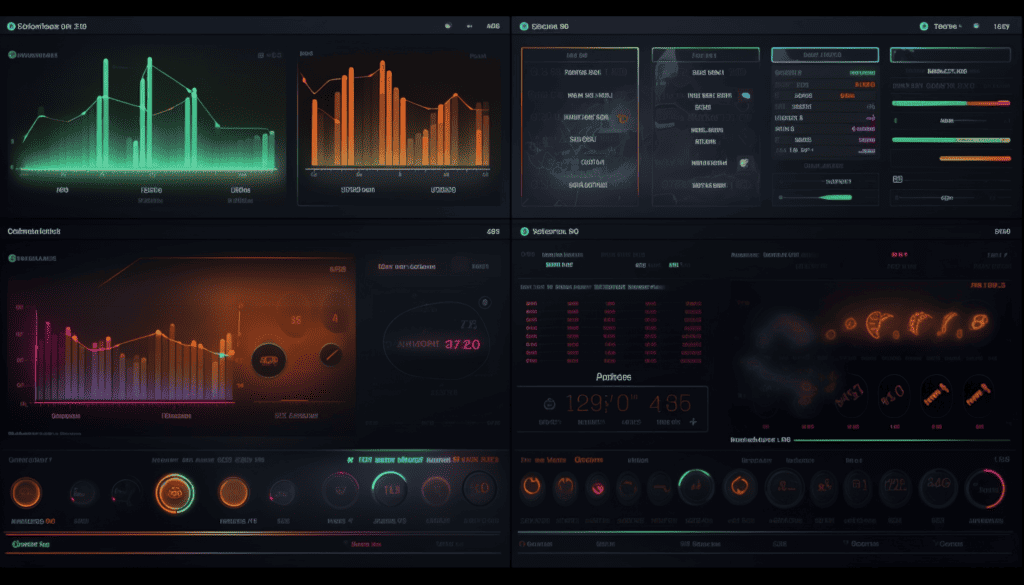Last updated on February 10th, 2024

Do ever feel like work is consuming your life, leaving you physically and mentally exhausted? If so, you may be experiencing burnout.
Burnout can lead to a number of health problems, ultimately jeopardizing your career and relationships.
The good news is that it’s possible to prevent burnout by making changes in how you manage stress and your work environment.
In this post, we’ll share 10 pro tips that you can use to prevent burnout and achieve sustainable career success.
So, if you’re feeling overwhelmed by work, read on to learn how to prioritize your health, shift your perspective, and manage stress effectively.
What is Burnout?
Burnout is a syndrome characterized by emotional exhaustion, depersonalization, and decreased sense of accomplishment in one’s occupation.
This is caused by chronic exposure to stress over a long period of time, leading to an inability to meet situational demands.
Burnout can lead to several negative consequences, including sleep deprivation, weakened immune system, difficulty concentrating, lack of productivity, avoidance of responsibilities, loss of enjoyment, among others.
It is essential to recognize the early symptoms of burnout, prioritize personal health, evaluate one’s typical weekly schedule, and reduce or eliminate unnecessary activities.
Difference Between Stress and Burnout
Stress and burnout are both related to the experience of chronic or prolonged stress, but they differ in several key ways.
Here are the main differences between stress and burnout:
Definition: Stress refers to the body’s response to demands or pressures, whether they are physical, emotional, or mental.
It is a natural reaction that can motivate and energize a person to cope with challenges.
On the other hand, burnout is a state of chronic physical and emotional exhaustion that is typically caused by prolonged or excessive stress.
Duration: Stress is usually a temporary condition that arises in response to specific events or situations. It can be acute, occurring over a short period, or episodic, where stressors are recurring.
Burnout, on the other hand, is a more long-term state that develops gradually over time and persists for an extended period. It is characterized by a feeling of being completely worn out and depleted.
Causes: Stress can be caused by various factors, such as work pressure, relationship problems, financial difficulties, or major life events.
It often stems from a perceived imbalance between the demands placed on a person and their ability to cope with those demands.
Burnout, however, is usually associated with chronic and unrelenting stress, particularly in the context of work or caregiving roles.
It often arises from prolonged exposure to high levels of stress, combined with feelings of being overwhelmed and lacking control.
Symptoms: Stress can manifest in a range of physical, emotional, and behavioral symptoms, including headaches, irritability, difficulty sleeping, changes in appetite, and increased anxiety.
Burnout, on the other hand, typically involves more profound and persistent symptoms, such as chronic fatigue, emotional detachment or cynicism, a decreased sense of accomplishment, feelings of emptiness or hopelessness, and a loss of motivation or interest in previously enjoyed activities.
Impact: Stress, when managed properly, can often be a temporary state that individuals recover from with time and appropriate coping mechanisms.
It may even have positive effects in certain situations by enhancing focus and performance.
Burnout, however, is a more severe condition that can have serious consequences on various aspects of a person’s life, including physical health, mental well-being, relationships, and work performance.
It may require significant intervention and lifestyle changes to overcome.

Warning Signs of Burnout
Exhaustion
Exhaustion is probably the most recognizable symptom of burnout. It can affect our physical, cognitive, and emotional states of being.
We may feel drained, both mentally and physically, and unable to concentrate or see the big picture.
Even minor tasks become difficult to complete, and work that we used to find enjoyable now feels overwhelming.
Exhaustion can stem from various factors like an always-on 24/7 organizational culture, intense time pressure, or simply having too much to do without control over the work, disliking it, or lacking the necessary skills to accomplish it.
It is important to recognize the symptoms of exhaustion and take preventive steps to reduce its impact.
Some effective strategies include taking breaks and proper sleep to rejuvenate, engaging in physical exercise, practicing mindfulness and relaxation techniques.
Cynicism or distancing oneself from work
Cynicism or distancing oneself from work is a dangerous aspect of burnout that can impact personal and organizational health. It can be caused by a variety of workplace factors and expressed in different emotional states and behaviors.
Workplace cynicism can lead to reduced job satisfaction, decreased productivity, and underperformance.
Cynicism can also spread rapidly throughout teams through emotional contagion, making it vital to take steps to create an anti-cynical workplace culture.
Strategies to prevent and reverse existing cynicism include providing meaningful recognition, asking for help or training, and boosting team’s sense of control.
Leaders must take measures to prevent cynicism from infecting their organization, and employees must be aware of its causes and effects and seek ways to cope with it.
Inefficacy or feelings of incompetence
Inefficacy or feelings of incompetence is one of the three symptoms that characterize burnout.
When people experience high levels of stress and pressure to perform, they may begin to doubt their skills and abilities, leading to feelings of inefficacy.
This can be especially damaging and unsettling for professionals who pride themselves on their competence and achievements.
Research has linked burnout to many negative physical and mental health outcomes, including depression and anxiety.
To combat burnout and feelings of incompetence, professionals should prioritize their health, seek out helpful interpersonal connections, and set realistic work limits.
They should also examine the underlying causes of burnout and develop preventive strategies to counteract their particular pattern.
By doing so, professionals can overcome burnout and achieve more-sustainable career success.

Negative Effects of Burnout
Health problems
Burnout often doesn’t just lead to emotional and mental exhaustion, but it can also cause serious health problems.
According to Gardner’s study in 2014, burnout can result in sleep deprivation, changes in eating habits, and a weakened immune system that can lead to frequent illnesses.
Physical symptoms like headaches, back pain, and muscle aches are also common.
Burnout can even result in difficulty concentrating and poor memory/attention, as well as poor performance and productivity.
In severe cases, it can lead to substance abuse and suicidal thoughts.
That’s why preventing burnout and prioritizing health should be a priority.
Engage in regular physical activity, eat a healthy diet, get enough sleep, and include enjoyable activities in your daily routine to ensure a healthy balance in life.
Relationship issues
Relationship issues can emerge as a result of burnout or they can contribute to it.
When we’re stressed out, it’s common to be less patient, less engaged, and less responsive to the people around us, including our colleagues, friends, and family members.
This can lead to conflicts and misunderstandings that further drain our energy and motivation.
On the other hand, if we feel unsupported or undervalued in our relationships, it can add to our stress and make us feel less connected to our work and our lives overall.

Burnout Prevention: Individual Strategies
1. Prioritizing health to avoid burnout
Prioritizing your health is crucial to avoiding burnout in the workplace. By taking care of yourself, you are better equipped to handle the stresses of work and prevent exhaustion, cynicism, and inefficacy.
Here are some ways to prioritize your health:
1. Take breaks throughout the day to stretch, move your body, or simply rest your eyes.
2. Make time for regular exercise, which can improve your mood and reduce stress.
3. Eat a balanced diet and stay hydrated.
4. Get enough sleep to refuel your body and mind.
5. Engage in activities that bring you joy and relaxation outside of work, such as hobbies or spending time with loved ones.
Remember, prioritizing your health is not selfish. It allows you to function at your best, both at work and in your personal life.
Take care of yourself, and you’ll be better able to take care of the tasks and relationships that matter to you.Â
2. Prioritizing healthy relationship
There are a few strategies that can be helpful:
1. Communicate clearly and honestly with the people in your life about your needs, boundaries, and expectations. This can help to clarify misunderstandings and reduce conflicts.
2. Make time for the people who matter to you, whether that means scheduling regular catch-ups with friends, or prioritizing quality time with your partner or family members.
3. Look for opportunities to connect with colleagues in meaningful ways, such as through collaborative projects or team-building activities.
4. Seek out support when you need it, whether that means talking to a trusted friend or family member, or seeking out professional guidance from a therapist or coach.
Ultimately, by prioritizing healthy relationships and open communication, we can reduce the stress and uncertainty that can contribute to burnout and build stronger, more resilient connections with the people around us.
3. Shifting perspective
Shifting perspective is a powerful approach to help prevent burnout.
It requires a fundamental change in how we view work and rest. Instead of seeing them as opposing forces, we need to appreciate how rest is integral to our productivity and well-being.
This perspective shift can be difficult, especially if we live in a culture that values busyness and productivity above all else.
But it’s crucial for our mental, emotional, and physical health to recognize the value of rest and balance.
Here are some tips to shift your perspective:
1. Identify the beliefs and assumptions that may be driving your behaviors and attitudes towards work and rest
2. Practice mindfulness and self-reflection to become aware of your thoughts and feelings.
3. Cultivate gratitude and appreciation for the present moment.
4. Celebrate small wins and accomplishments, rather than always focusing on what needs to be done next.
5. Prioritize self-care activities like exercise, sleep, and hobbies.
By shifting our perspective, we can reframe our relationship with work and rest, leading to greater fulfillment, productivity, and a reduced risk of burnout.

4. Reducing exposure to stressful activities
Reducing exposure to stressful activities is crucial to avoid burnout.
Here are some ways to do it:
1. Identify the activities that cause you stress and plan to reduce or eliminate them. Focus on what is most important and delegate tasks that can be handled by others.
2. Learn to manage your time more effectively. Create a schedule that allows for breaks and relaxation. This will help you to maintain your focus throughout the day.
3. Take care of your physical and mental health. Regular exercise, healthy eating habits, and quality sleep are essential to help you cope with stress.
4. Practice mindfulness. Meditate, breathe deeply, and take breaks to clear your mind and re-center yourself.
5. Spend time in nature. Go for a walk, hike, or bike ride to enjoy the beauty of the outdoors and reconnect with yourself.
5. Seeking out helpful interpersonal connections
Seeking out helpful interpersonal connections can be a powerful way to prevent and recover from burnout.
Research has shown that human connections are among the most important things we need to feel fulfilled and happy in life.
As we navigate the stresses of work, it’s essential to prioritize our relationships and build strong connections with colleagues, friends, and family.
Connecting with others who share similar experiences can be particularly helpful, as it can help us feel less alone and more supported.
One way to do this is by joining professional associations or networking groups.
These can provide valuable opportunities to connect with others in your field and build relationships that can help you navigate work challenges.
Another way to seek out connections is by making time to socialize and engage in activities outside of work.
This can help you recharge and build connections outside of the office, which can be especially important during times of stress.
By prioritizing interpersonal connections, you can build resilience and protect yourself.

Preventing Workplace Burnout: Organizational Strategies
6. Insisting on time for rest and renewal
Insisting on time for rest and renewal is crucial to prevent burnout. It may seem counterintuitive, but taking a step back from work can actually boost productivity in the long run.
By prioritizing self-care and avoiding overworking, you can avoid exhaustion and feelings of inefficacy.
Here are some tips to ensure you’re taking the necessary time for rest and renewal:
1. Schedule downtime on your calendar just as you would a work meeting or appointment. This time could be used for activities like meditation, exercise or spending time with loved ones.
2. Set boundaries for your work hours, and stick to them as much as possible. Avoid taking work home with you and turn off work notifications outside of working hours.
3. Take breaks throughout the day and use this time to recharge. A quick walk or stretching can work wonders.
4. Finally, don’t hesitate to use your vacation days. Taking a real break can help reduce stress and improve both your mental and physical health.
Ultimately, prioritizing rest and renewal is essential for maintaining a healthy work-life balance and preventing burnout.
7. Setting realistic work limits to prevent employee burnout
One way to prevent burnout at work is to set realistic work limits.
This involves managing both your workload and your time, and taking into account your personal needs and limitations.
Here are some tips to help you set realistic work limits:
1. Identify your priorities: Make a list of your tasks and responsibilities, and prioritize them based on their importance and urgency.
This will help you focus on the most important tasks and avoid getting overwhelmed by less important ones.
2. Break down your tasks: Large tasks can be daunting and can lead to procrastination and burnout. Break down your tasks into smaller, manageable steps that you can accomplish more easily.
3. Schedule breaks: Taking regular breaks can help you recharge and avoid burnout. Schedule short breaks throughout the day, and longer breaks when you need to step away from work for a while.
4. Communicate with your boss: If you feel overloaded or overwhelmed, talk to your boss about your workload and see if you can adjust it to a more manageable level.
By setting realistic work limits, you can reduce stress, increase productivity, and avoid burnout at work.
So take the time to assess your workload and your personal needs, and make adjustments as needed to create a healthy work-life balance.Â
8. Boosting team’s sense of control
Boosting your team’s sense of control is crucial in preventing burnout.
When employees feel like they have no agency or power over their work, they are more likely to experience feelings of exhaustion and inadequacy.
As a leader, you can help your team regain a sense of control by:
1. Allowing team members to have a say in decision-making processes.
2. Providing opportunities for professional development and skill-building.
3. Encouraging open and honest communication within the team.
4. Ensuring that team members have the resources and support they need to complete tasks.
5. Acknowledging and valuing team members’ contributions and efforts.
By boosting your team’s sense of control, you create a more positive and productive work environment, which can ultimately lead to better outcomes for your organization.
Remember, prevention is always better than cure, and keeping your team motivated and engaged is the key to avoiding burnout and achieving success.Â

9. Providing meaningful recognition
Providing meaningful recognition is a powerful way to prevent burnout in the workplace.
According to HR professionals, lack of recognition and rewards is strongly correlated to employee burnout. Recognizing and rewarding employees in a timely and meaningful way makes them feel valued, seen, and heard.
This helps create a connected workplace that supports and sustains employees through uncertain times.
Recognition also builds a sense of community by celebrating employees’ efforts and achievements which makes them feel even more seen and valued.
Experiential rewards like Blueboard can be particularly effective as they provide opportunities for employees to connect with their colleagues.
Through different types of recognition, employees can create powerful bonds that not only help them prevent burnout but also boost their overall performance, satisfaction and moraleÂ
10. Asking for help or training
Asking for help or training is a key strategy in preventing burnout.
It can be hard to admit when we need assistance, but it’s important to recognize when we’re struggling and reach out for support.
Seeking advice or guidance from a more experienced colleague can help us gain new skills and perspectives, which can boost our confidence and effectiveness.
Additionally, taking the initiative to pursue training opportunities shows a commitment to continuous learning and development.
This investment in ourselves can pay dividends in the form of increased job satisfaction and better performance outcomes.
Don’t be afraid to ask for help or seek out training opportunities when you need them – it’s a sign of strength, not weakness.
Some specific ways to ask for help or training include:
1. Seeking input or feedback from a mentor or coach.
2. Identifying areas where you need more knowledge or skill and asking for resources or assistance.
3. Participating in job training or educational programs.
4. Reaching out to professional associations or networks for support and guidance.Â

Burnout Inventory
The Burnout Inventory is a tool used to assess and measure levels of burnout in individuals.
There are several different versions of burnout inventories available, each with its own specific questionnaire and scoring system.
One of the most commonly used burnout inventories is the Maslach Burnout Inventory (MBI), developed by Christina Maslach and Susan E. Jackson.
The Maslach Burnout Inventory (MBI) consists of three subscales that assess different dimensions of burnout:
Emotional Exhaustion: This subscale measures feelings of being emotionally overextended and depleted. It assesses the level of exhaustion and energy depletion experienced by an individual.
Depersonalization: This subscale evaluates an individual’s negative or detached response toward other people, often manifesting as cynicism, callousness, or a lack of empathy.
Personal Accomplishment: This subscale assesses an individual’s perception of their own competence and successful performance in their work or role. It measures feelings of accomplishment and self-efficacy.
The MBI has been widely used in research and clinical settings to identify and measure burnout among professionals, particularly in high-stress occupations such as healthcare, education, and social services.
It helps provide insights into the specific areas of burnout that individuals may be experiencing and informs interventions and strategies to address burnout effectively.
Final thoughts on How to Prevent Burnout
In conclusion, preventing burnout requires a proactive approach to managing stress levels and ensuring self-care.
It’s important to identify triggers and take steps to mitigate their impact, whether through taking breaks, delegating responsibilities, or seeking support from colleagues and friends.
Engaging in regular exercise, getting enough sleep, and maintaining a healthy work-life balance are also critical components of preventing burnout.
Ultimately, recognizing the signs of burnout and taking action to address them is key to maintaining overall well-being and productivity in both personal and professional pursuits.
By prioritizing self-care and stress management techniques, individuals can avoid burnout and maintain a healthy, fulfilling life.
